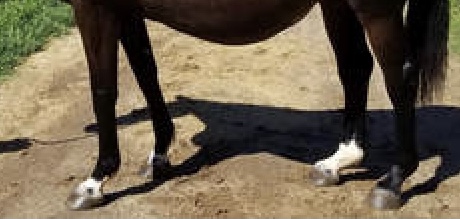Saw a youngster for sale and found a photo of the dam, HEAVILY pregnant. She was very down in the hind fetlocks and straight through the hock. DSLD springs to mind… is there any other cause of this issue aside from DSLD? Not interested in buying a horse who may have inherited that.


